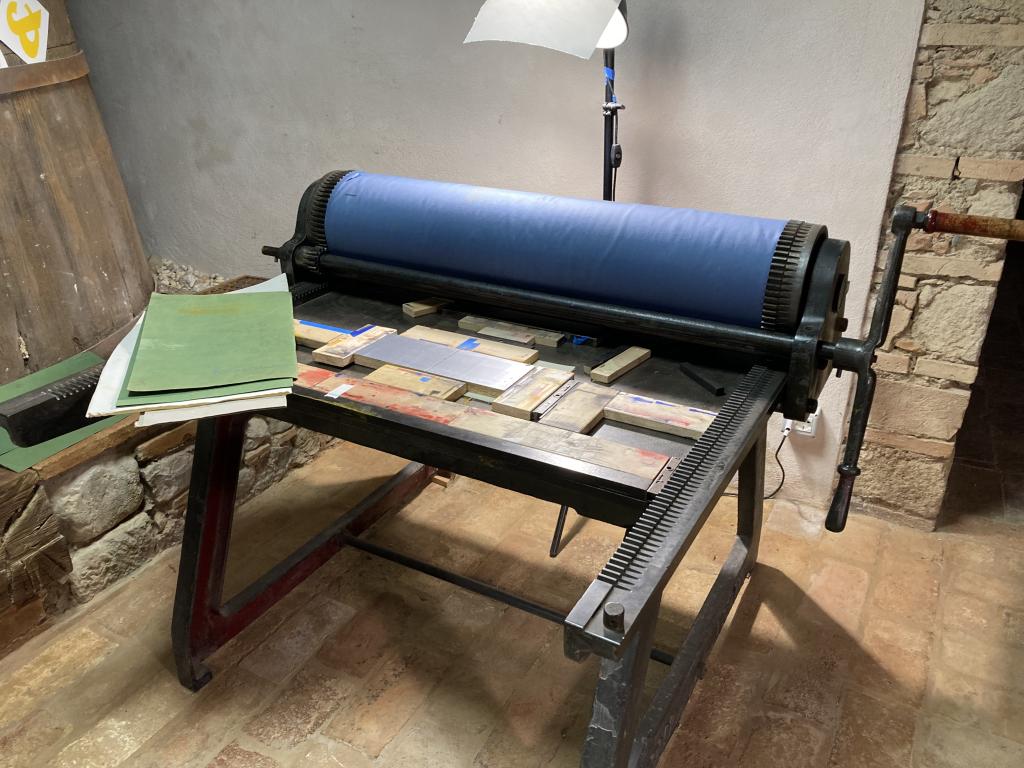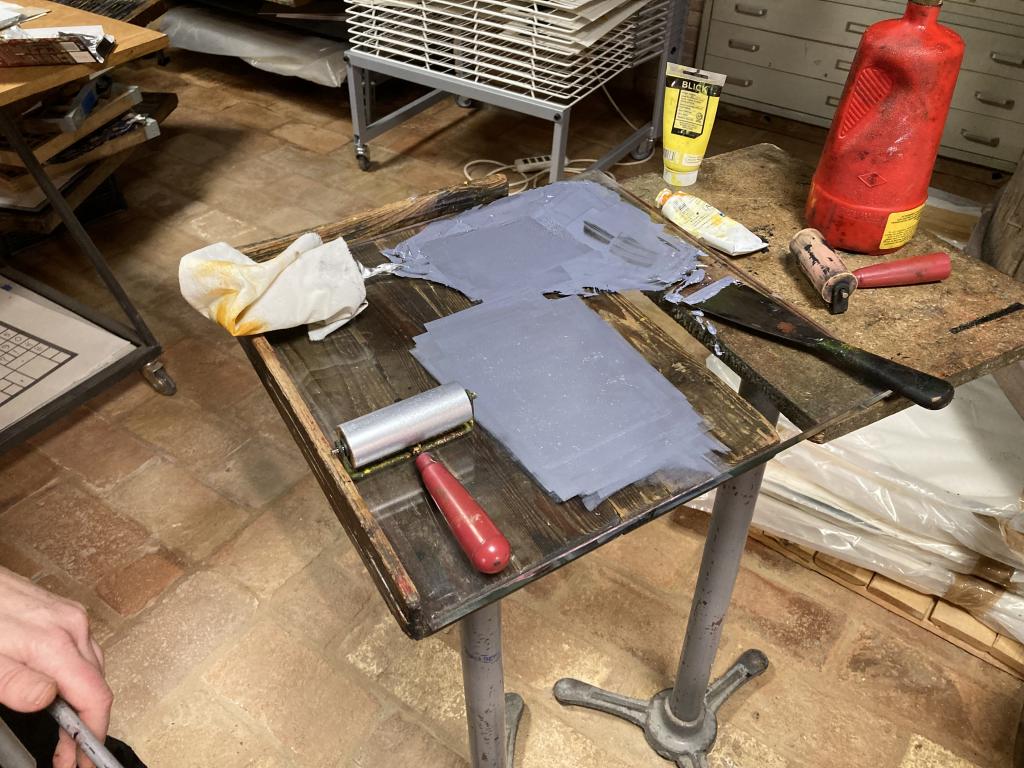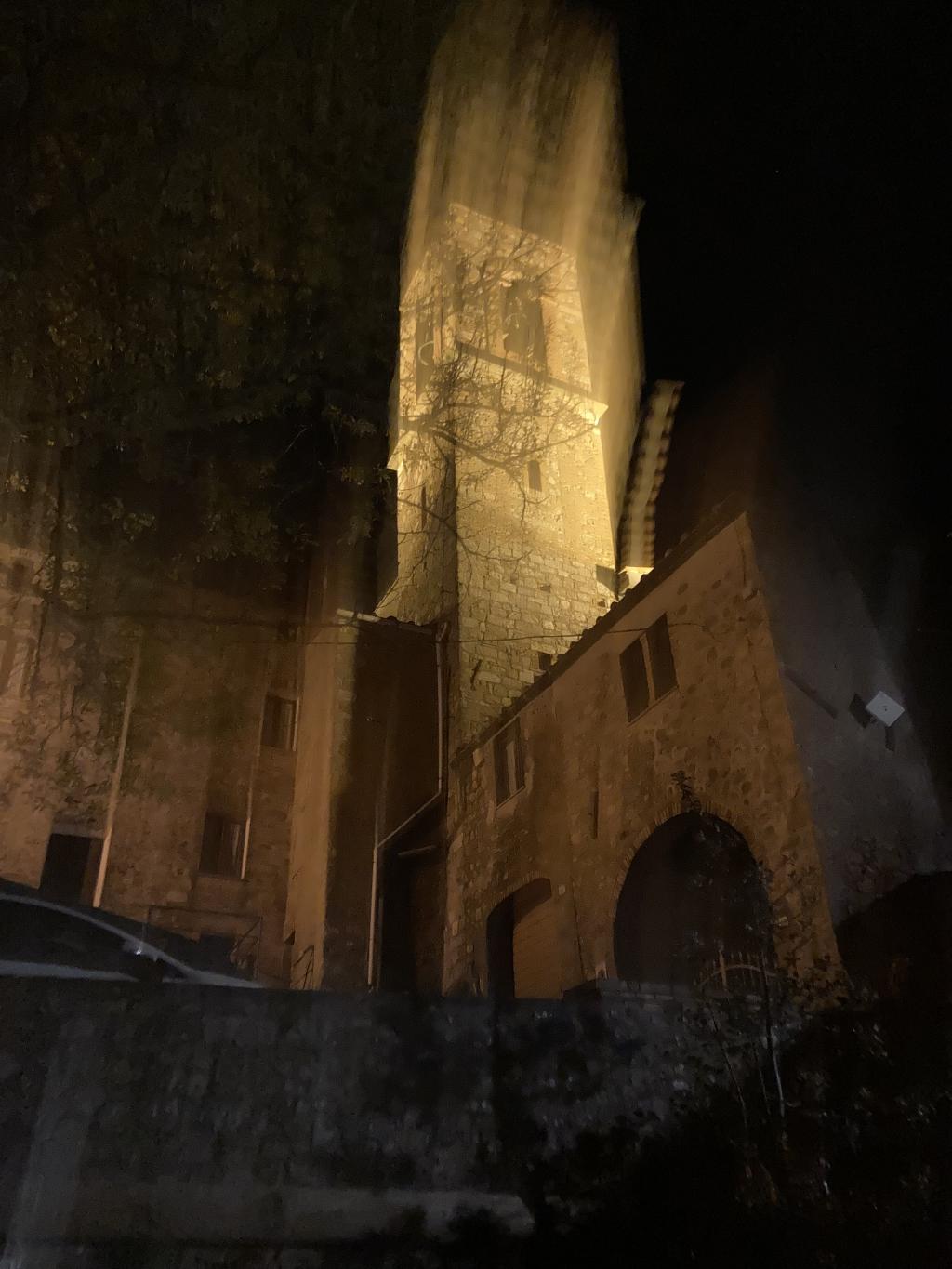Edicola 518
A year ago I posted a list of nine European magazine shops, putting forward: “And so a plan: visit all nine. One could do worse for the spine of an European itinerary.
”We haven’t achieved that goal on this trip, but we did make it to one, today: Edicola 518 in Perugia.
In truth, we didn’t actually visit Edicola 518, as it—the newsstand—is closed for the moment. But the affiliated Paradiso 518, around the corner, a bookshop cum newsstand cum publisher cum event space, was open and welcoming and open.
It was, as expected, dreamy.
Like Do You Read Me?! in Berlin, Paradiso 518 contains an artfully curated collection of books, magazines, zines, and other publications, albeit with a different sensibility, rooted in Perugia and in Italy, though with a global view. Their stock is neither randomly scattered, nor strictly organized, but rather artfully sprinkled for optimal browsing. I emerged with a suitably fascinating selection.
We had a good chat with cofounder Antonio Brizioli, discussing their zeitgeist, as well as our This Box is for Good project (he generously agreed to accept 10 of our “Serrazzano boxes” for gifting to patrons).
Antonio described their project itself as a kind of “box,” to be filled with all manner of words, art, music, creativity, and I suggested it is also a kind of magnet, drawing Venn (like us) toward it.
The visit today confirmed the value of investing in magnetism like this: making things, publishing things, organizing things, with a confident aesthetic, a point of view, an eclecticism, as a way, in part, of drawing kin near, and making your place the kind of place you want to live in.
After leaving the shop, we walked around the corner to see the currently-shuttered newsstand—“Italy’s most beautiful,” it is said—on our way to get burgers at the nearby sports bar. It was, indeed, beautiful, and I’m hopeful I’ll return when it’s open.
We asked Alberto for a recommendations on where to go next, and he recommended Gubbio as a possibility. and so, as I type, here we are. I am lying on a leather coach in the fourth floor apartment in the old city, overlooking a panoramic view of Umbria, writing about the magnet, with hopes that will attract others.
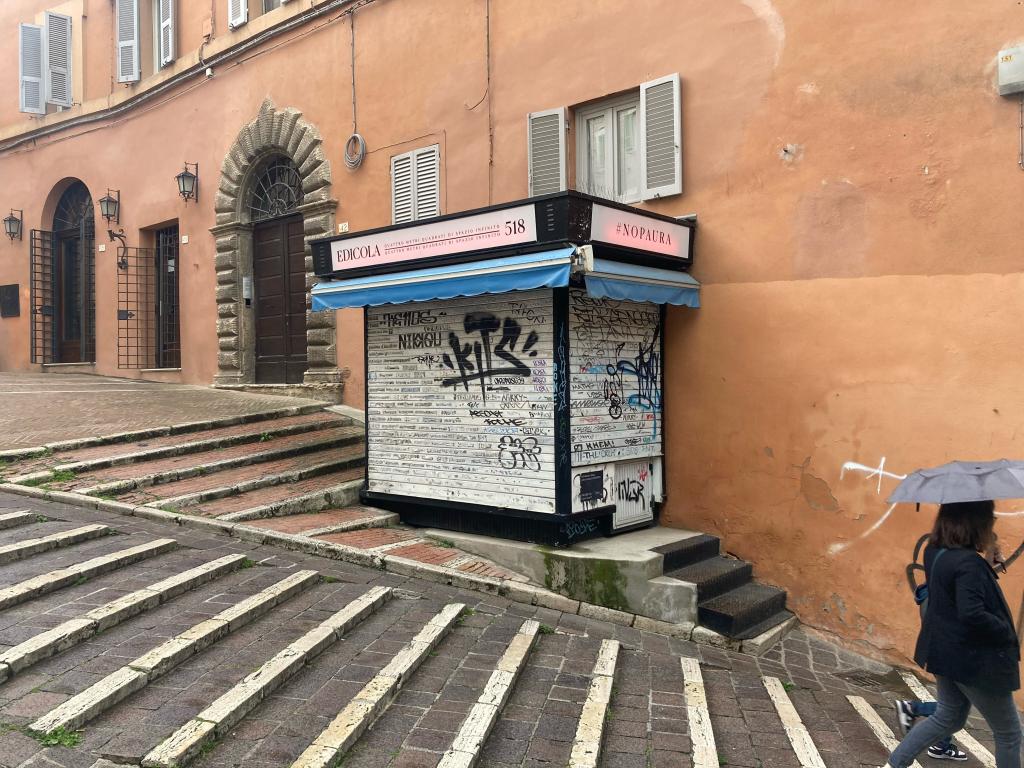
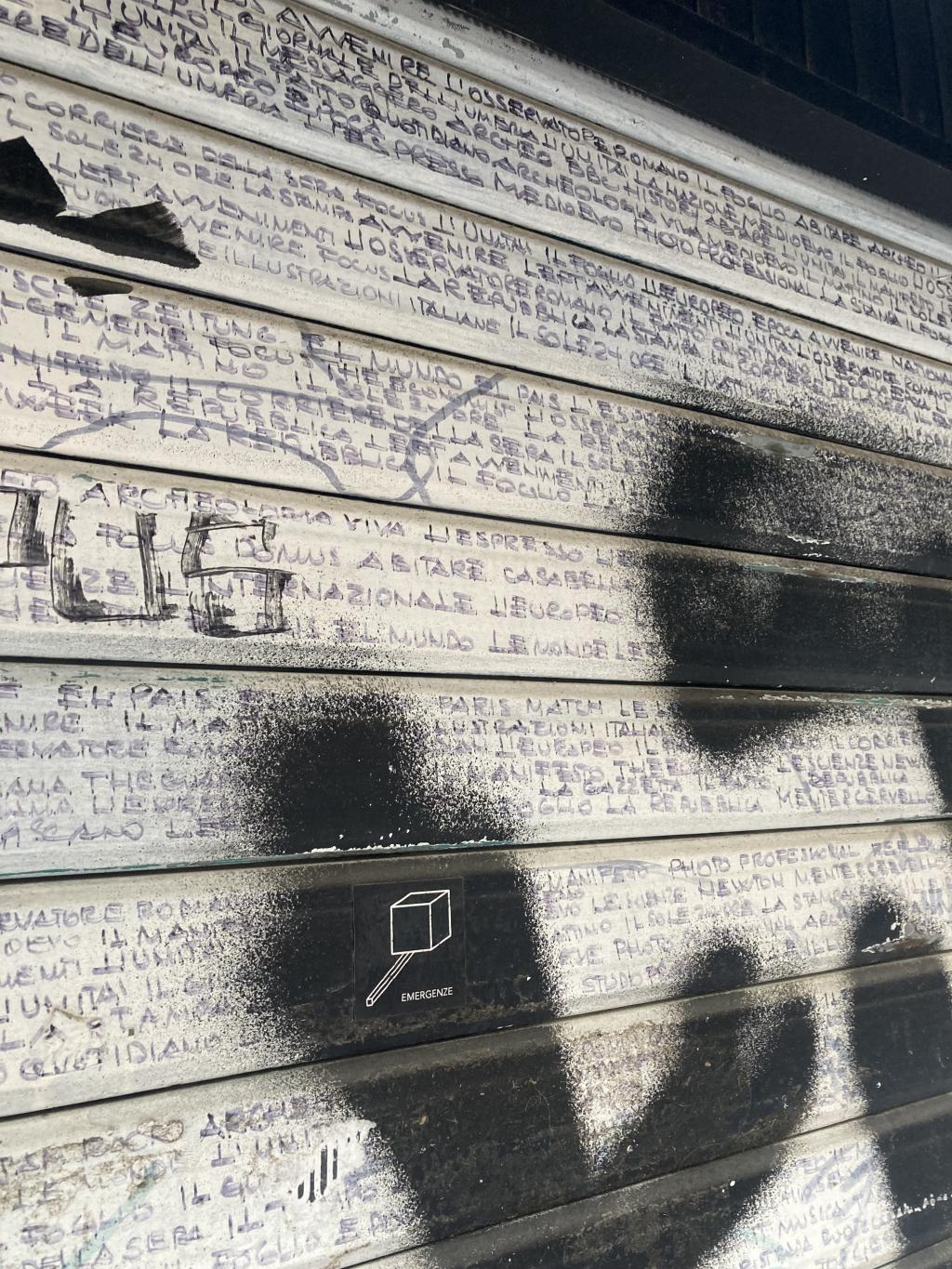
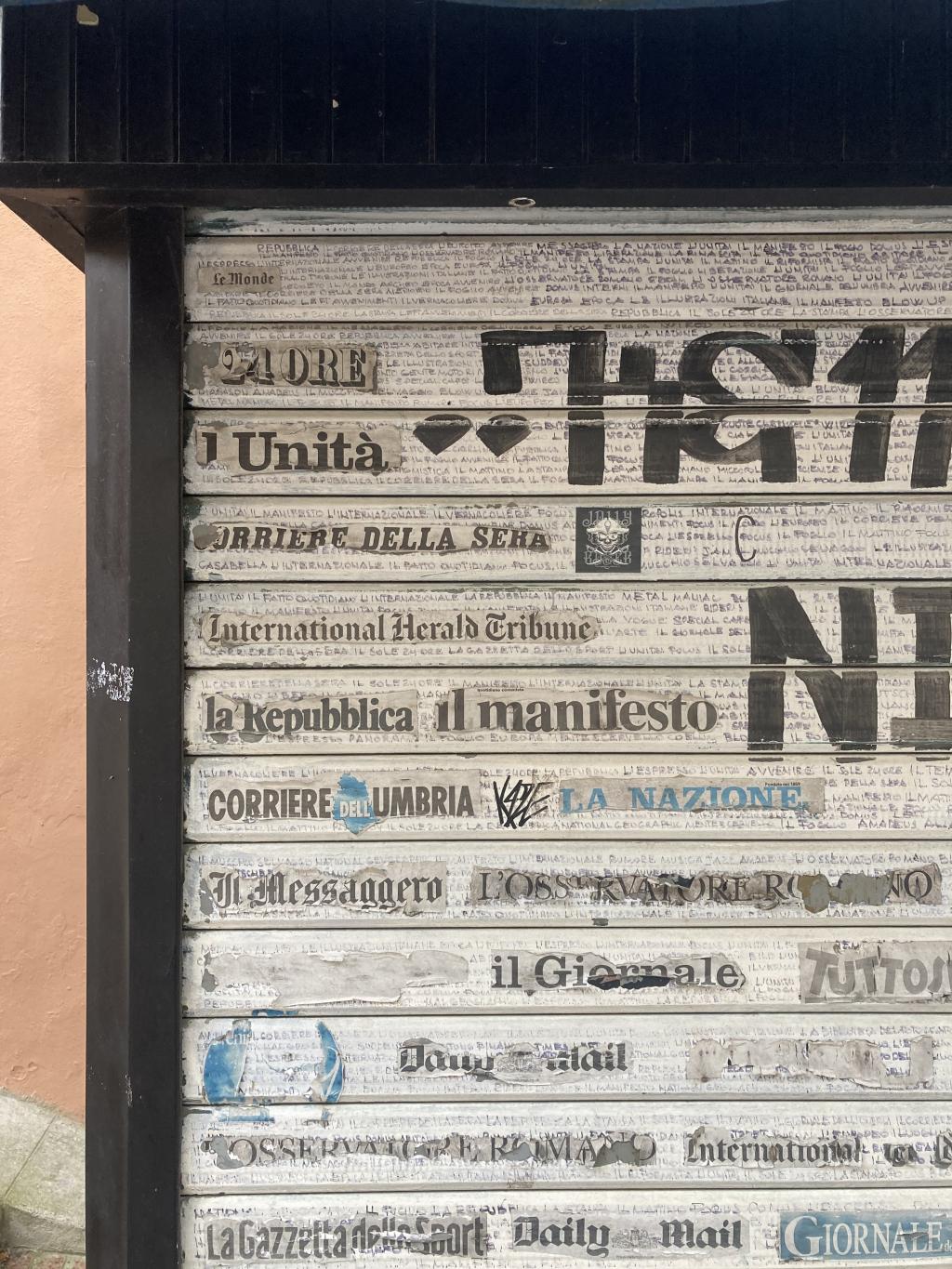
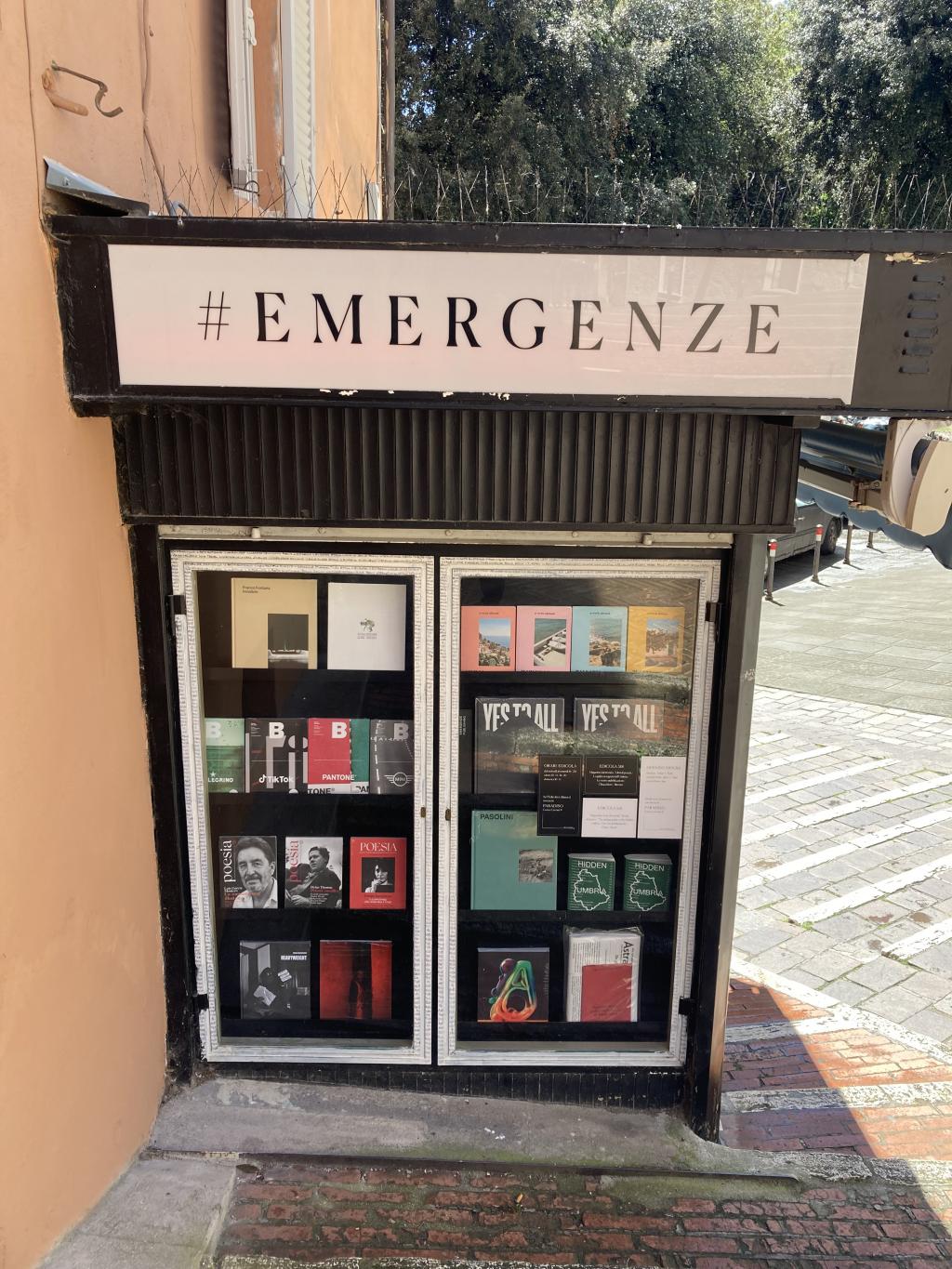
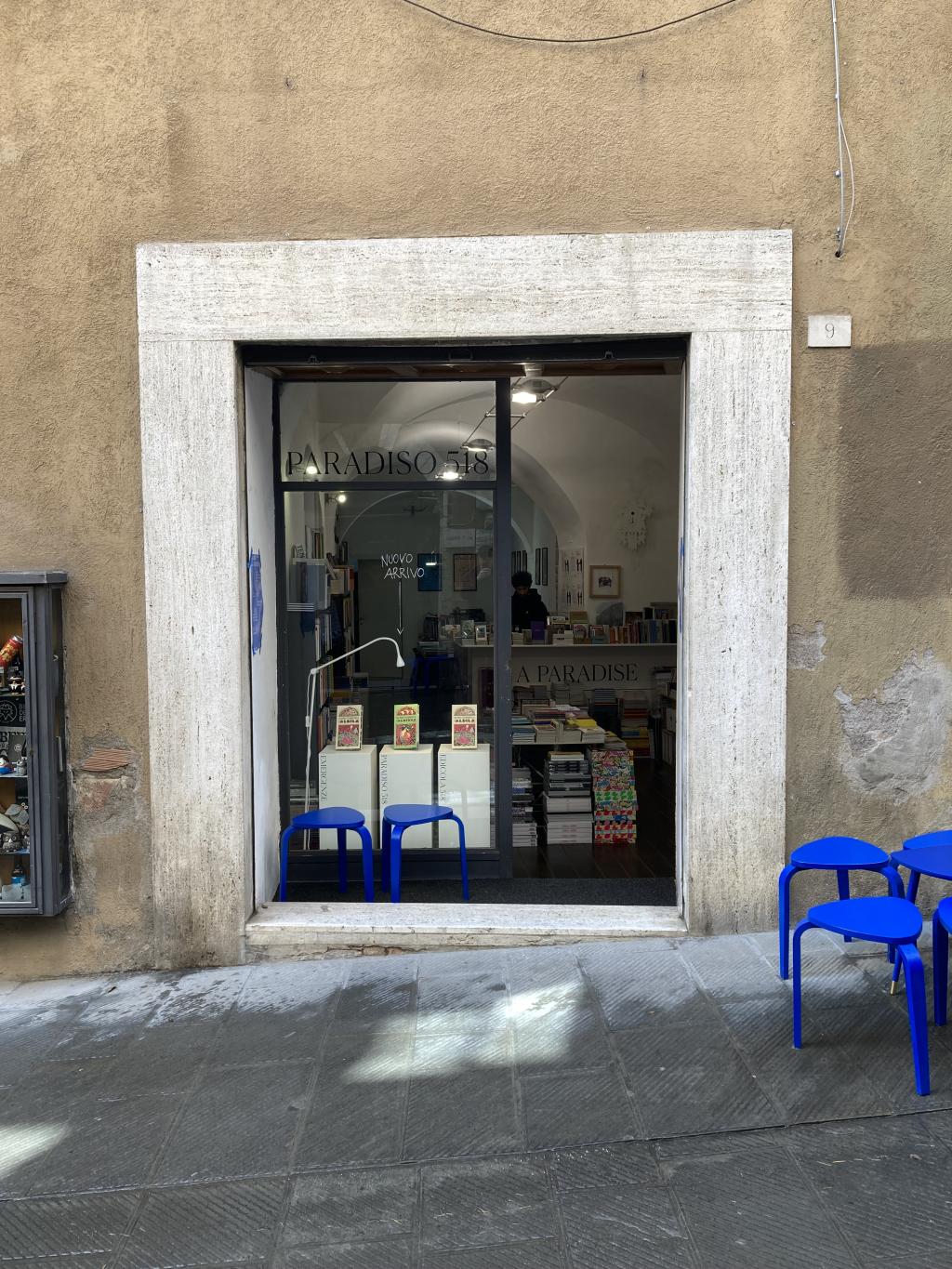
I learned Italian from an 8 year old…
Not all Italian.
But in the “stone barn ruin” space, I’m your man.
We’re are staying tonight at an agriturismo near Montieri; we decamped from Serrazzano, as our 5-day printing residency came to an end. We didn’t get far, just 39 km, but it’s a transition day, and we needed a rest from the mad dash to the finish of our print projects.
It was a warm, sunny afternoon as we arrived, so I took the opportunity to sit outside and sketch the ruin of a stone barn just across the yard. As I was sketching, the 8 year old son of the owners ambled over and watched me draw. He attempted to engage me in conversation, in Italian, to which I responded, using Google Translate, “can you teach me Italian?” He agreed, enthusiastically.
And so, as I sketched, I asked him the names of things: roof, wall, sky, clouds. He told me the words, sometimes needing to spell them, but often not, as Italian is surprisingly easy to spell.
My favourite of the words he taught was architrave—“the lintel or beam, typically made of wood or stone, that rests on the capitals of columns”—which is a pretty sophisticated word for anyone to know, let alone an 8 year old.
This turned out to be a very effective way to learn: he was a good and patient teacher, and his effusive exacto for every right answer was very affirming.
I realize, as I type this, that among other things this was the thing on this trip I’ve done that my father would have definitely done in the same situation. He wouldn’t have written a blog post about it, but he certainly would have told my mother about it (as I did Lisa).
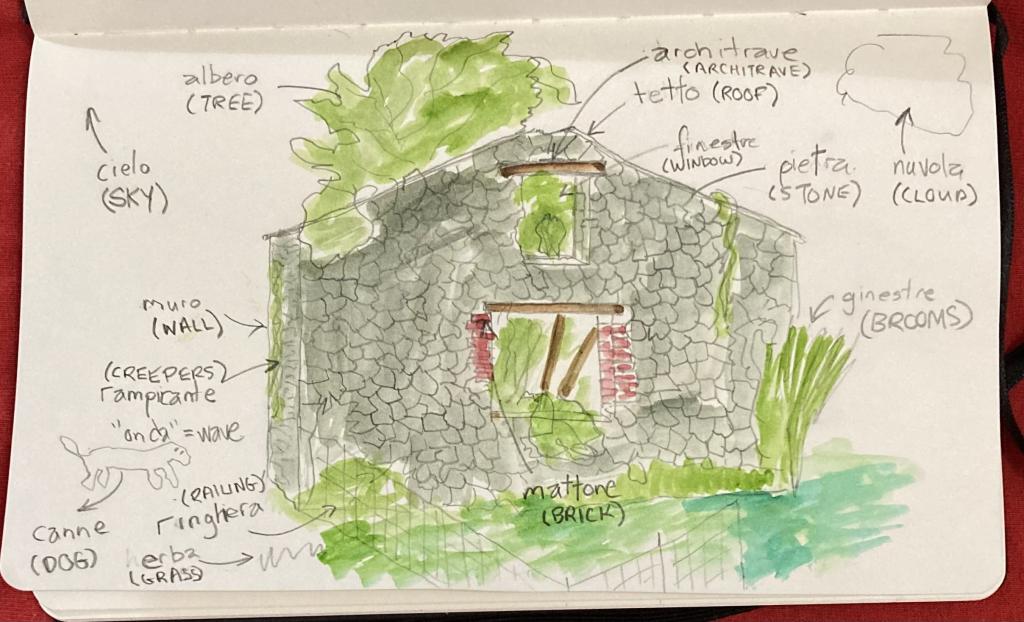
Sulphur and Helium
There’s a slight smell of sulphur ever-present here in Serrazzano, and I used this as inspiration for my first printing experiment last week. By chance, there was a very sulphuric yellow at the ready.
Today, in a mad dash to the finish line, keen to print with some of the luscious very large wood type, I extended the elemental theme and made a helium poster.
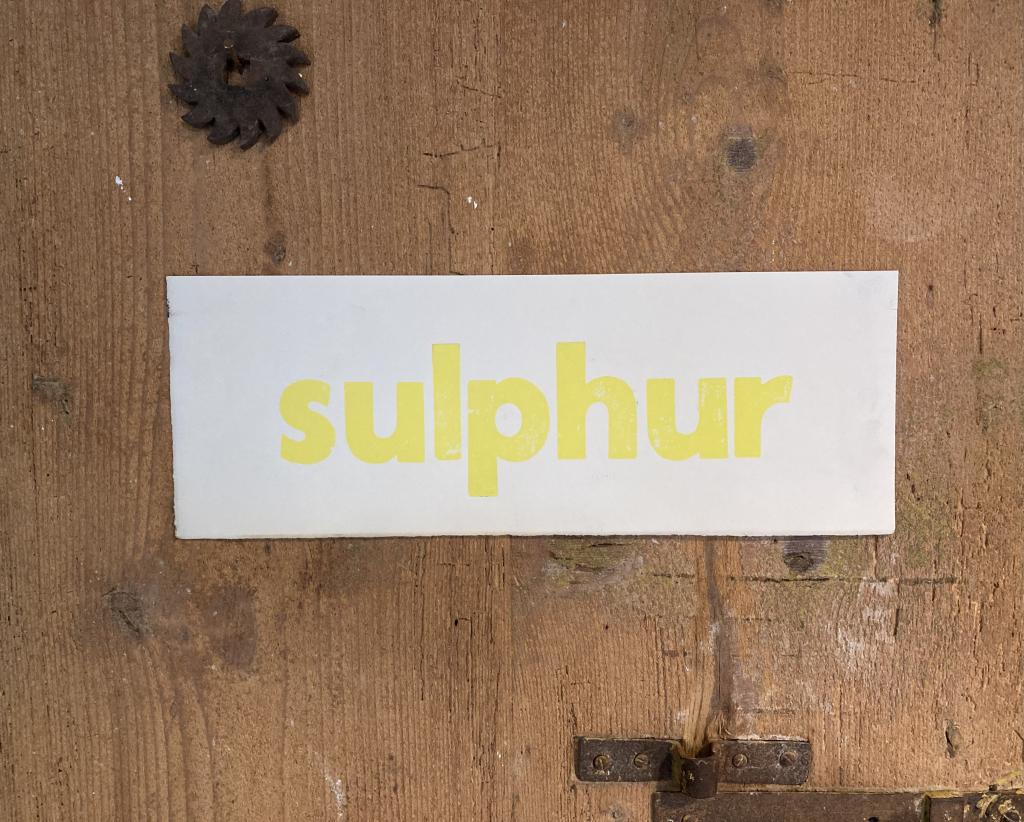
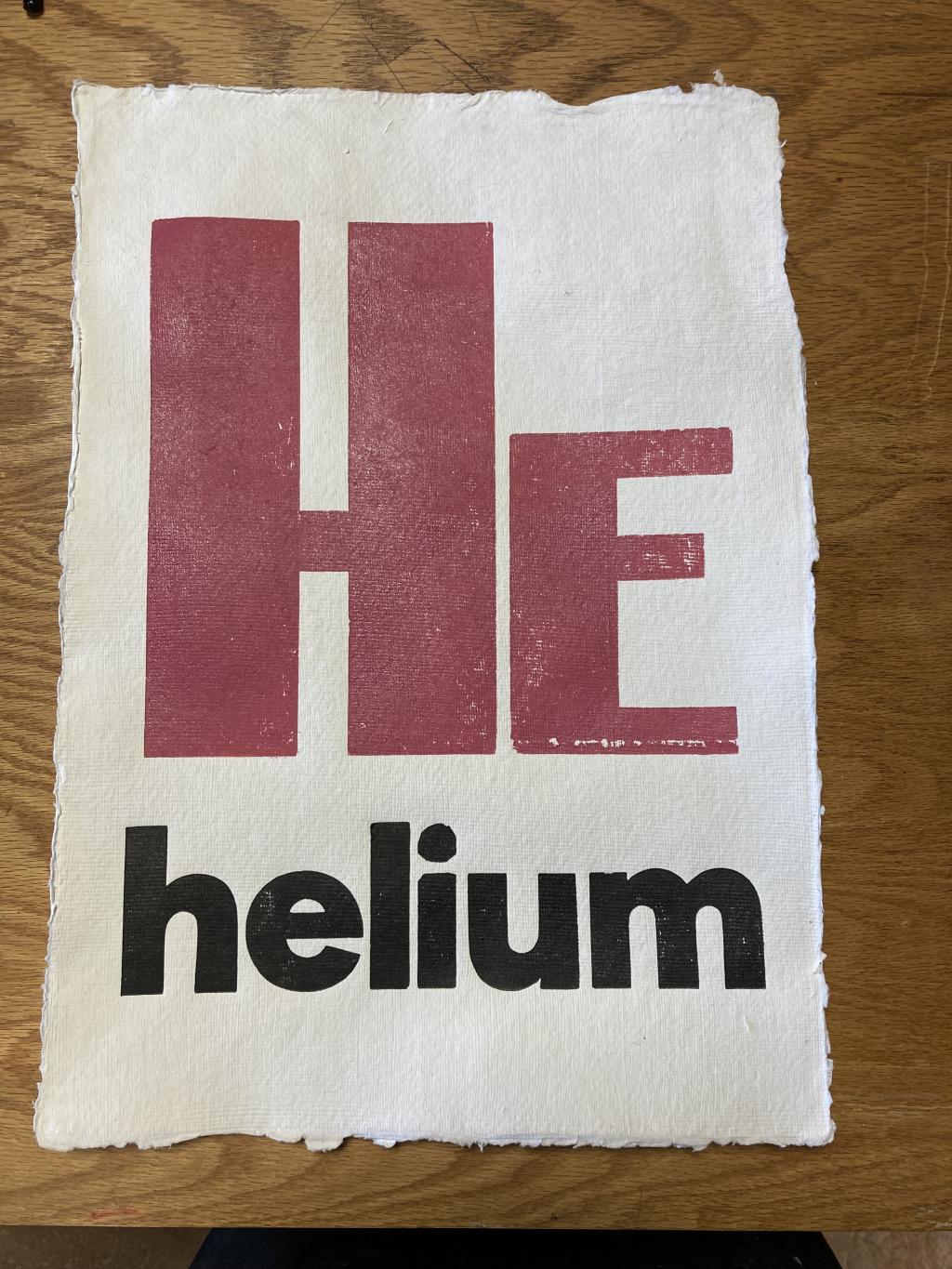
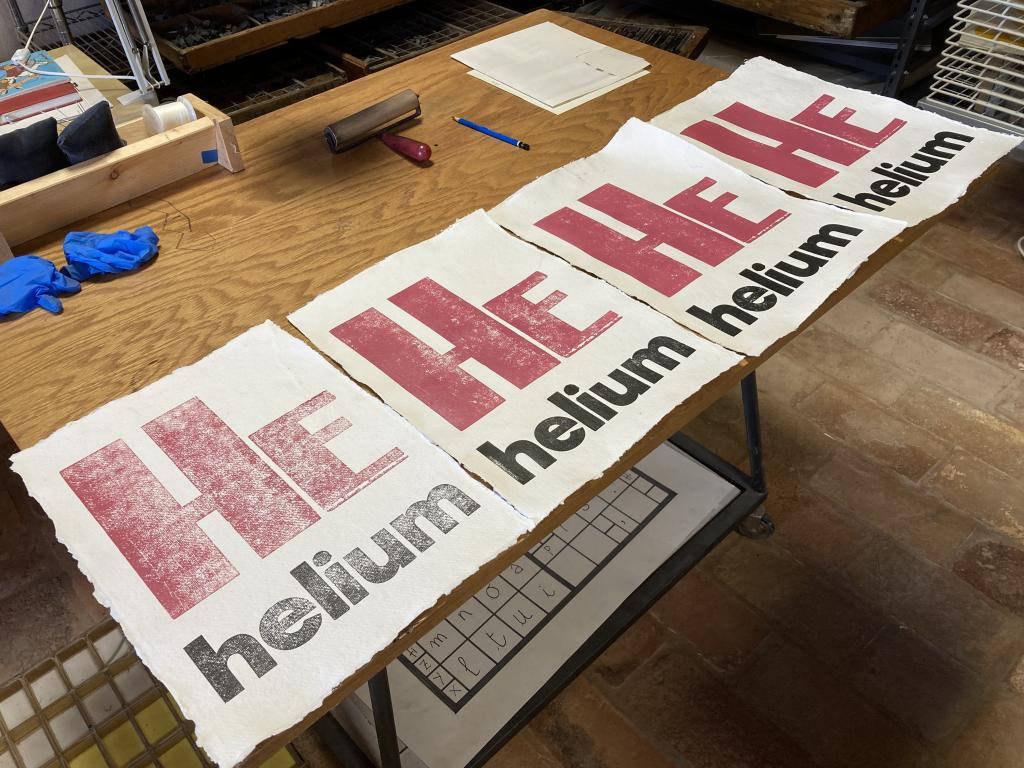
When the church bells ring, the dogs bark…
Sunday morning in Serrazzano.
Societa’ Cooperativa Supermercato Castelnuovo Valdicecina
L. and I drove a harrowing 20 minutes to get groceries yesterday.
The most expensive item we bought was an 8-pack of Crodino, a non-alcoholic aperitif I’ve grown fond of, which was €6.25; meanwhile, the litre of red wine for supper was €1.51.
We were billed 2 cents each for the compostable produce bags we placed our onions, peppers, carrots, and cucumbers in. The Italian system for produce-buying seems to universally involve bagging, and then, self-serve, placing each item on an automated scale, selecting a picture of the item from a screen, and sticking the label that spits iout onto the bag.

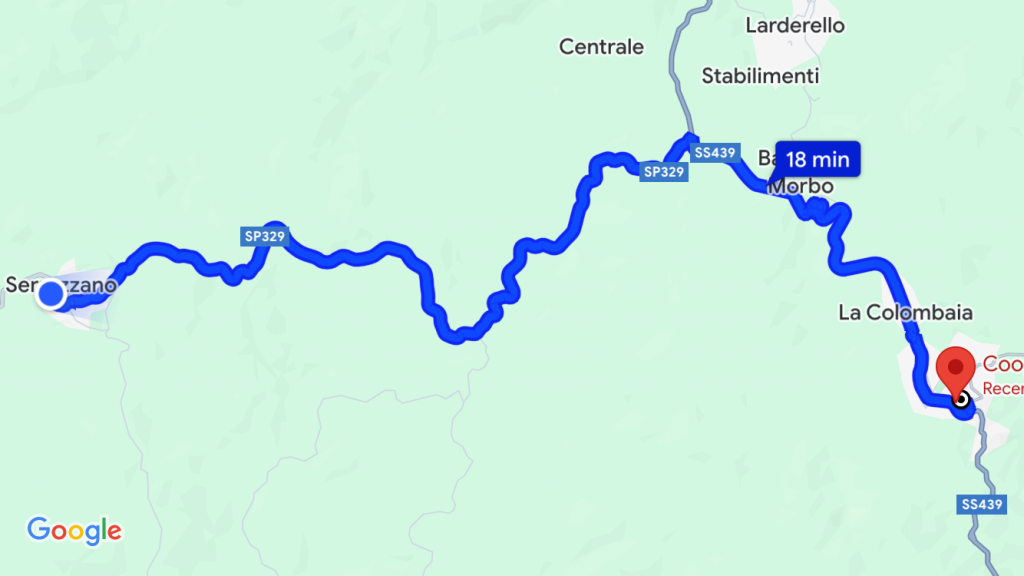
Late Nite Printing
“Time to dry” is one of the significant limiting factors when you have just five days of press time, especially when multiple layers are involved.
Yesterday, late in the day, the box design evolved to the point where we knew we needed to print solid colours on all the boxes before we slept.
Which is how we found ourselves, ‘round midnight, mixing ink and printing boxes, in the ancient mill building that houses the flatbed press.
The timestamp on the photo of the bell tower I took on my stumble home is 1:26 a.m. A long day, with much accomplished.
